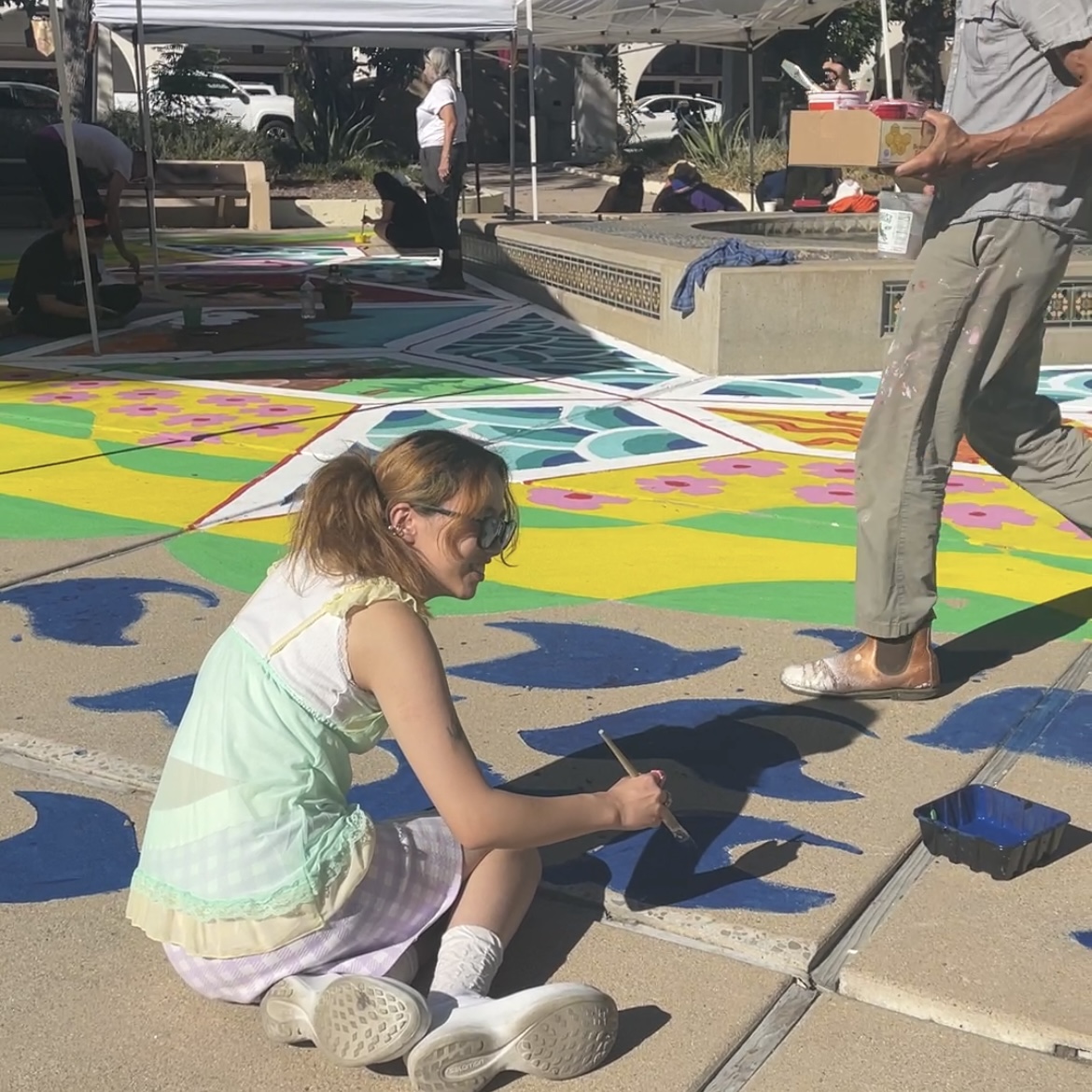We caught up with the brilliant and insightful Skye Wang a few weeks ago and have shared our conversation below.
Hi Skye, thanks for joining us today. Are you happy as a creative professional? Do you sometimes wonder what it would be like to work for someone else?
It’s hard for me to picture myself going to work on a fixed schedule, but honestly, I’m not against the idea of having a job. In fact, in some ways, having a regular job, like working in one of those sleek office buildings filled with modern technology, as seen in Jacques Tati’s Playtime, surrounded by colleagues in suits who barely acknowledge each other, has always felt a bit like a fantasy to me, even a source of my inspiration.
A lot of my early work explored the rhythms and patterns that come from people living and working in highly structured environments. People become like products on an assembly line, going through the motions, performing roles that often feel dull and empty. I was also drawn to the unspoken rules and unnecessary rituals in office culture, all centered around image, performance, and being observed.
Before high school, I lived in Hong Kong. For most of that time, the things I interacted with most were concrete buildings and the repetitive routines of school life. That’s when I started to realize I had my own ideas and things I wanted to express. Creating art and drawing became my way of pushing back, a quiet form of resistance against the system I was part of.
That said, I do love working. But I often find myself reflecting on the blurry line between being an artist who needs to make a living and being someone with a regular job. In the end, both are navigating structures, performing roles, and negotiating meaning within systems we didn’t create. That tension itself is deeply human. It’s not just about making a living, but about the emotional architecture that surrounds work—our responsibilities, the weight of relationships, the ways we cope. These experiences aren’t limited to any one profession. It’s something anyone who lives within a community can relate to—the sense of responsibility toward family, the complexities of relationships, the need to release pressure. These are emotional experiences that go beyond any specific job title. They are shared moments of existence.

Awesome – so before we get into the rest of our questions, can you briefly introduce yourself to our readers.
I’m an animator and filmmaker currently based in Los Angeles. I graduated from the California Institute of the Arts, and my work spans a wide range of mediums, including digital animation, stop-motion, and motion graphics. I have a strong curiosity for emerging technologies and am always exploring new forms of visual storytelling.
Whether it’s a short film or a looping motion piece. I aim to create visuals that feel both intimate and thought-provoking.
I see animation not just as a medium for entertainment, but as a visual language capable of expressing complex emotions and challenging conventions. I’m always excited to keep exploring, collaborating, and creating work that connects with people on a deeper level.
What do you think is the goal or mission that drives your creative journey?
One of the goals that drives my creative journey is to keep learning. Everything evolves so quickly, yet animation is, ironically, a very slow process. As you know, it takes 24 frames to create just one second of animation, which means hundreds or even thousands of drawings go into a single short film. Every time I work on an animation project, I’m forced to slow down, to step outside of the fast-paced rhythm of the world and reflect—on how I’ve changed since my last piece, and what new perspectives I bring to the table.
Because the process is so time-consuming, I naturally become more eager to work efficiently. That mindset pushes me to actively seek out new tools, new techniques, and new ideas. And as I learn, I bring those things into the work. This creates a kind of feedback loop, where I can clearly see my growth and evolution from one project to the next.
This also taught me that there’s little value in doing the same thing over and over. For example, when I was at the Ottawa International Animation Festival, I saw a new VR animation by the Japanese artist Koji Yamamura, whose work I really admire. I was surprised—and moved—by how his signature artistic language translated beautifully into this medium. It reminded me that even the most traditional forms of expression can find new life in emerging technologies. That experience stayed with me, and it reinforced the importance of staying open, not just to technological change, but to the broader shifts happening in society and culture.

What do you find most rewarding about being a creative?
I once ran a Chinese podcast called BananaPan with friends, where we talked about the latest animated films we watched and shared thoughts on the animation industry. The name BananaPan comes from a type of camera movement in animation that mimics perspective changes in a pan shot. To me, that’s the magic of animation. It allows you to visualize things that often go unnoticed in everyday life, and it gives space for even the most personal or offbeat stories to be told.
No matter how niche or non-mainstream your ideas are, animation offers the chance to connect with someone, somewhere, who resonates with you. That sense of discovery and connection is what makes the creative journey so meaningful for me.
Contact Info:
- Website: https://skyewangart.weebly.com/
- Instagram: drawdrewdrawndrawing



